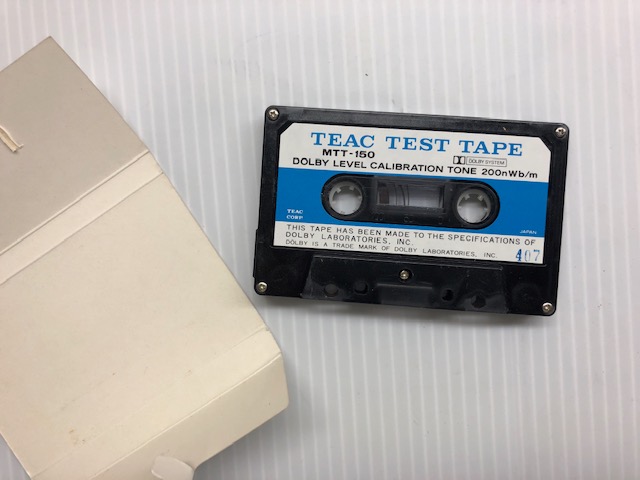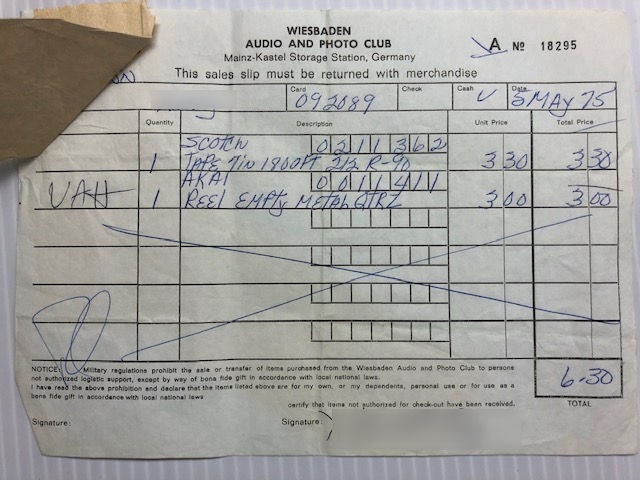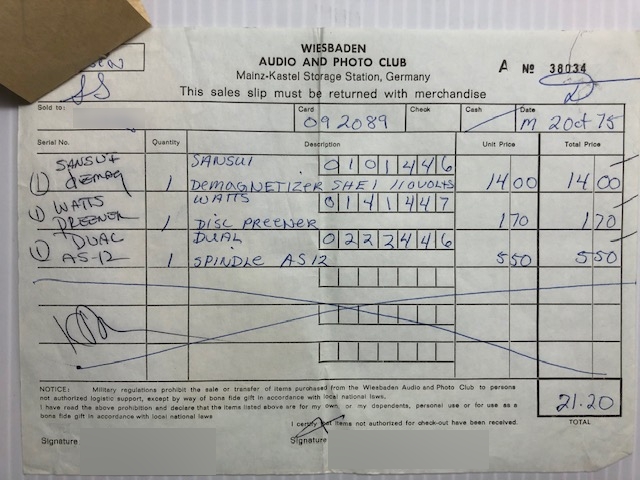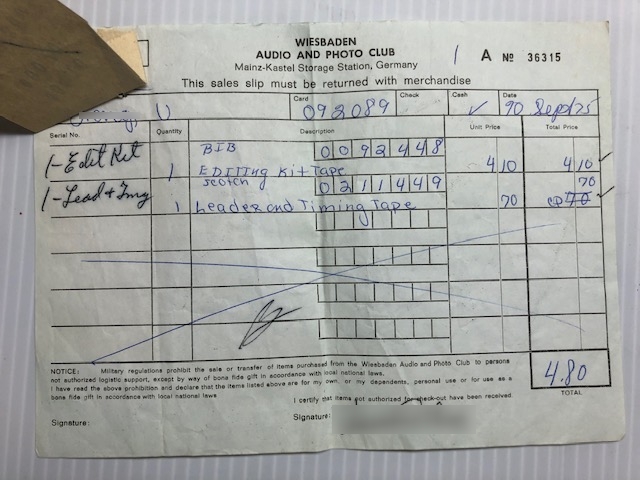Reel-to-Reel Galleries
- Starlite Regent 777
- Crowncorder CTR-5400
- Panasonic RS-760S
- Akai 202D-SS
- Sony TC-600D
- Tandberg TD20A SE
- Akai GX-4000D
- Akai GX-260D
- Sony TC-123
- Brush BK-401 Soundmirror
- RCA SRT-403
- Akai X-2000S
- Akai 202D-SS, the 2nd
- Akai 1730D-SS
- Akai GX-280D
- Akai X-100D
- Roberts 1630
Cassette Gallery
- Teac A-170
- Pioneer KP-500
- Sankyo STD-1900
- Sankyo STR-100
- Pioneer KE-4242
- Sony TCM-818
- Sony Walkman WM-11D
- Sony Walkman WM-EX10
- Panasonic RQ-212DKS
- Sony CFS-204
- Nakamichi BX-150
- Sony TC-WE635
- Pioneer in Truck
- Sony EXR-20
- Sony CFD-V17
- Sony CFD-V30
- Akai X-2000S
- Sears All-in-One
- Mattel Disney
- Mickey Mouse WD 1030
8-Track Gallery
- Craig/Pioneer 3121
- Muntz 4/8-track
- Lear Jet P-570
- Olson 4UN QDS
- Akai X-2000S
- Panasonic RS-805
- Realistic TR-801
- Akai CR-80D-SS
- Panasonic RE-8860
- Radio Shack TR-167A
- Bowman Astrosonic
Other Gallery
Related Items
Related Projects
Links
Related Items
After being in a hobby long enough it's amazing how much "stuff" can be acumulated over the years. Magnetic recording is no different and aside from the players ans the tape there are some accessories that are part of the process. Here are a few items I've picked up over time.
Since many reel-to-reel decks did not come with Dolby noise reduction built-in, units like these from Teac were available as add-ons. I bought 2 because I had a 4-channel deck, an Akai 202D-SS. I bought one one February 6, 1975 and the second one sometime after that. The units came with both cassette and reel calibration tapes. |
|

These are the calibration tapes that came with these units. |
|

The accessory kits included screwdrivers, labels, fuses, and cleaning cloths. |
Here's the receipt for the first one I bought. |
I am not aware that any reel-to-reel machines came with metal take-up reels but there might have been some. The decks I acquired came with plastic ones. I bought this one to go with my Akai 202D-SS on May 5, 1975 for $3.00. Considering that I have seen these things go for over $30.00 on various auction sites I wish I'd bought a case of them. |
|
These little clips came either with a reel of tape or could be purchased separately. The idea was to clip them to the reel to keep the tape from unspooling. I never found them to be that helpful. Perhaps when a tape is shipped they would be of use due to the josteling that can take place in transit, causing the tape to loosen and unwind a bit. |
|
|
|
This is a head demagnetizer. These are used as part of regular maintenance to remove any magnetic build-up on the heads and guides, anything the tape would touch. This one is from the late 1950s. |
|
Here is a more modern head demagnetizer. I picked this one up when I was in Europe in 1975 to go with my Akai 202D-SS |
|
This is a used record/playback head. I am not sure which machine it came from but it might come in handy so I hang on to it. |
|
Here's a Robins tape maintenance kit I picked up along the way. While pretty old, the fluids are still in good shape and I do use it. |
|
This tool is for splicing tape. This could be to repair a tape that has broken, to add some leader tape, or to do an edit. This one is brand new and the price indicates that it cost 75 cents. I probably got this as a hand-me-down from my dad. |
|
Another tape splicing tool. |
|
And yet another tape splicing tool. This one was branded by Akai so it cost 80 cents. |
|
When it comes down to it, this is my favorite tape splicing tool. It's simple. I have used it to repair over 350 8-track tapes and for putting leader tape on countless reel to reel tapes. |
|
Switch boxes are a necessary addition when one has multiple tape machines. The decks get connected to these with both their input and output lines, and then the position of the switches determines whether the deck is connected to the main receiver or another deck or both. This eliminates swapping cables and makes it easy to record/playback from machine to machine. |
|
The more decks in the system, more switch boxes are required. One cannot really have to many of either. These two connect the Nakamichi BX-150, a Sony TC-WE635, a Tandberg TD20A SEand the Panasonic RS-805 to the system. |
|
There really is no limit to the number of switch boxes one might need. This one connect an Akai X-2000S, a Realistic TR-801, and my computers to the system. |
|
When the cassette became popular, many people wanted a way to play cassettes in their 8-track players, primarily in their cars. There were a few different types of devices on the market that allowed for this. |
|
There are an assortment of splicing, leader, and sensing tapes used. The splicing and sensing tapes shown here are certainly dried out and, luckily, fresh stock is still avaialble for purchase. |

|
A place to store tapes is required and I've used boxes, shelving, and anything to help keep things organized. I made a couple of these cabinets back in the 1980s, basing the design on legal-style bookcases where the door flips up and slides back. |
|
Here's another storage soulution I've employed, a vintage, 72-drawer library card catalog. These things are perfect for storing cassettes and they look good too. |
|
Headphones are a requirement, not only for personal listening but to monitor a recording as it is being made. These are a few of the headphones I've picked up over the years. |
|
Here's a box made by Koss for allowing a 2 pairs of headphones to be connected to the system with volume controls and a switch to turn off the main speakers. This is handier on my computer's audio system than my main system. |
|
And let's not forget about microphones for live recording. These two came, I think, with the Sony TC-600D. |
|
I am not sure where i picked these up but they are vintage Akai microphones and probably from an Akai M-8 or M-9 recorder. |
|
|

|
Click on an image to enlarge it.
Updated December 2020.


